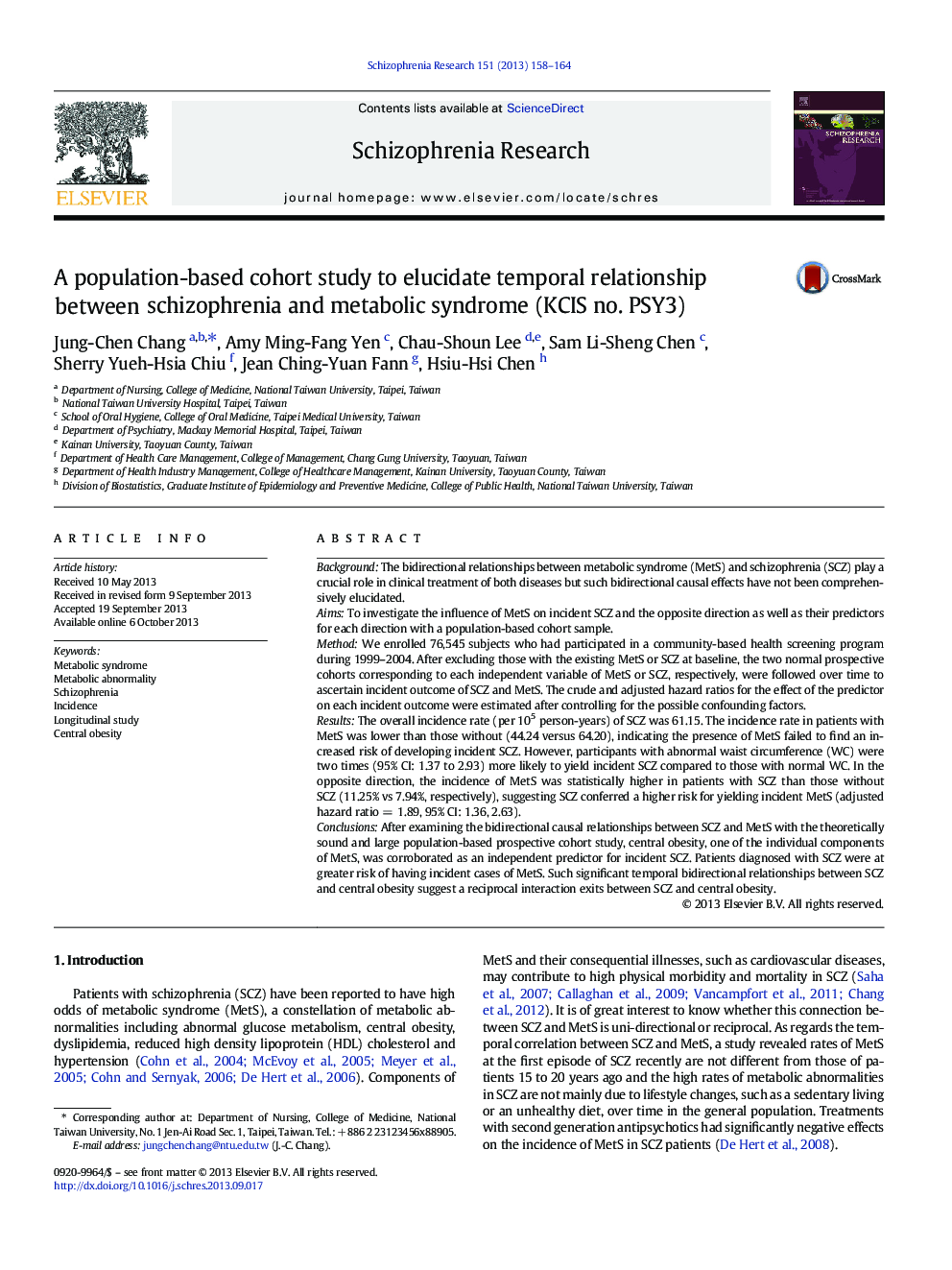| Article ID | Journal | Published Year | Pages | File Type |
|---|---|---|---|---|
| 341197 | Schizophrenia Research | 2013 | 7 Pages |
BackgroundThe bidirectional relationships between metabolic syndrome (MetS) and schizophrenia (SCZ) play a crucial role in clinical treatment of both diseases but such bidirectional causal effects have not been comprehensively elucidated.AimsTo investigate the influence of MetS on incident SCZ and the opposite direction as well as their predictors for each direction with a population-based cohort sample.MethodWe enrolled 76,545 subjects who had participated in a community-based health screening program during 1999–2004. After excluding those with the existing MetS or SCZ at baseline, the two normal prospective cohorts corresponding to each independent variable of MetS or SCZ, respectively, were followed over time to ascertain incident outcome of SCZ and MetS. The crude and adjusted hazard ratios for the effect of the predictor on each incident outcome were estimated after controlling for the possible confounding factors.ResultsThe overall incidence rate (per 105 person-years) of SCZ was 61.15. The incidence rate in patients with MetS was lower than those without (44.24 versus 64.20), indicating the presence of MetS failed to find an increased risk of developing incident SCZ. However, participants with abnormal waist circumference (WC) were two times (95% CI: 1.37 to 2.93) more likely to yield incident SCZ compared to those with normal WC. In the opposite direction, the incidence of MetS was statistically higher in patients with SCZ than those without SCZ (11.25% vs 7.94%, respectively), suggesting SCZ conferred a higher risk for yielding incident MetS (adjusted hazard ratio = 1.89, 95% CI: 1.36, 2.63).ConclusionsAfter examining the bidirectional causal relationships between SCZ and MetS with the theoretically sound and large population-based prospective cohort study, central obesity, one of the individual components of MetS, was corroborated as an independent predictor for incident SCZ. Patients diagnosed with SCZ were at greater risk of having incident cases of MetS. Such significant temporal bidirectional relationships between SCZ and central obesity suggest a reciprocal interaction exits between SCZ and central obesity.
